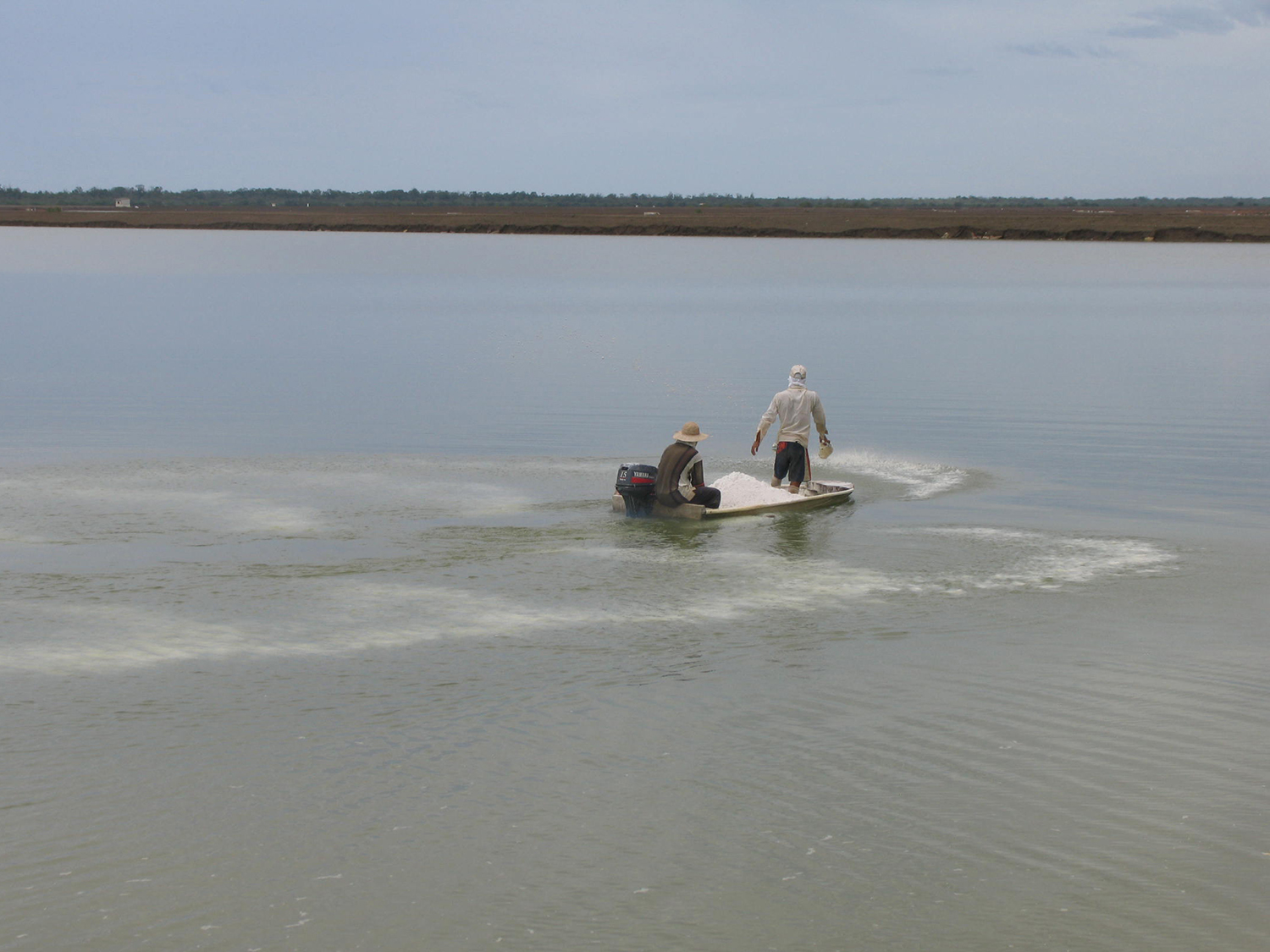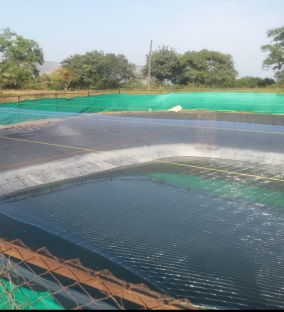Fish farming, also known as aquaculture, is an important industry in many countries, including India. It is the fastest growing sector in food production and offers many benefits, including providing a source of high-quality protein and income for farmers. However, to ensure the success and sustainability of a fish farm, proper management practices must be implemented. These practices include maintaining the health of the fish, managing the water quality and quantity, and properly feeding the fish.
Keys points on fish farm management
- Water Quality Management: Monitoring and maintaining the water quality of the fish pond is crucial for the health and growth of the fish. Parameters such as pH, dissolved oxygen, temperature, and ammonia levels need to be regularly monitored and adjusted as necessary.
- Feed Management: Providing the right type and amount of feed is essential for the growth and health of the fish. Feed should be formulated based on the species of fish being farmed and their nutritional requirements.
- Disease Management: Fish are susceptible to various diseases, and it’s essential to have a plan in place to prevent and treat any outbreaks. This includes regular monitoring for signs of disease, implementing biosecurity measures, and having the appropriate medication on hand.
- Stocking Density: Maintaining the appropriate stocking density is essential for the growth and health of the fish. Overcrowding can lead to poor water quality and increased disease outbreaks, while understocking can result in slow growth and reduced yields.
- Harvesting: Proper timing and methods of harvesting are essential to ensure the quality and safety of the final product. This includes monitoring the size and condition of the fish, and using appropriate equipment to handle and transport the fish.
- Pond Maintenance: Regularly cleaning and maintaining the fish pond is essential to maintain water quality and prevent the build-up of harmful toxins and debris. This includes removing any dead fish, cleaning the pond bottom, and removing any excess algae.
- Record Keeping: Keeping accurate records is essential to monitor the performance of the fish farm and make informed decisions. This includes monitoring water quality, feed consumption, growth rates, disease outbreaks, and yields.
- Proper Planning: Proper planning is essential to ensure the long-term success of a fish farm. This includes selecting the appropriate species, determining the stocking density, designing the pond, and developing a management plan.
- Biological Control: Utilizing natural predators, parasites and pathogens to control pests and diseases can be an effective way to manage fish health, and minimize the use of chemicals.
- Environmental Impact: Fish farming can have an impact on the environment, so it is important to minimize any negative effects. This includes managing waste, minimizing the use of chemicals, and ensuring that the fish farm is sited in an appropriate location.
One important aspect of fish farm management is maintaining the health of the fish. This can be achieved through regular monitoring of water quality, including pH levels, temperature, and oxygen levels. Disease can also be prevented through the use of vaccines and medications, as well as through proper sanitation and hygiene practices. Additionally, farmers should be knowledgeable about common fish diseases and the signs of illness in order to quickly identify and treat any issues that may arise.
Another crucial aspect of fish farm management is proper feeding. Fish require a specific diet that varies depending on the species. Farmers should have a good understanding of the nutritional requirements of their fish and provide a balanced diet that meets those needs. This can include both natural food sources, such as algae and plankton, as well as manufactured feed. Overfeeding can lead to water pollution and disease, so farmers should be careful to not overfeed their fish.
In addition to these general management practices, there are specific techniques that can be used to improve the sustainability of a fish farm. One such technique is integrated fish farming, which involves combining fish farming with other forms of agriculture, such as crop or poultry farming. This can lead to a more efficient use of resources and a reduction in waste. Another sustainable practice is the use of recirculating aquaculture systems, which allow for the recycling of water and the reduction of water usage.
The depth of water for fish farming
The depth of water in a fish farm is an important factor to consider when setting up and managing a fish farming operation. The ideal depth of water for fish farming depends on the species of fish being raised, as well as the specific management practices being employed.
For most species of fish, a depth of 3 to 5 feet is considered optimal. This depth provides enough water for the fish to swim and move around comfortably, while also allowing for adequate water circulation and oxygenation. In addition, a depth of 3 to 5 feet is also ideal for the growth of aquatic plants and other organisms that can provide food and shelter for the fish.
In some cases, such as when raising fish in ponds or tanks, a deeper water depth may be necessary. For example, fish species that require deeper water, such as catfish or tilapia, may need a depth of 4 to 6 feet. This allows the fish to have enough space to grow and thrive, while also providing enough water for the proper functioning of the pond or tank’s ecosystem.
It is important to note that the depth of water is not the only important factor for fish farming, other factors such as water temperature, pH levels, dissolved oxygen and water quality also play a crucial role in the growth and survival of fish. Thus, it is crucial to have a proper water management system in place to maintain the optimal conditions for the fish.
Use of lime in fish farming
Lime, also known as calcium oxide or quicklime, is a commonly used product in fish farming. It is used to adjust the pH level of the water in the fish pond, as well as to add essential calcium and other minerals to the water.
One of the main uses of lime in fish farming is to raise the pH level of the water. Fish prefer a slightly alkaline environment, with a pH level between 7 and 8.5. Acidic water can cause stress on the fish, making them more susceptible to disease and reducing their growth rate. Lime can be added to the water to neutralize acids and increase the pH level.
In addition to adjusting the pH level, lime is also used to add essential minerals to the water. Calcium, for example, is necessary for the development of strong bones and scales in fish. Lime is a rich source of calcium and other minerals such as magnesium and potassium. These minerals can help to improve the overall health and growth of the fish.
Lime can be added to the fish pond in several ways. It can be spread over the surface of the pond, or it can be added directly to the water using a lime slurry. It’s important to note that lime should only be added in small quantities to avoid over-liming the water which can cause fish stress and inhibit their growth.
It is also important to note that lime is toxic to some species of fish and should be used with caution. Therefore farmers should have knowledge of the species they are farming and the pH and mineral requirements of that species before using lime.
Overall, the use of lime in fish farming can be a valuable tool for maintaining the health and growth of fish. By adjusting the pH level and adding essential minerals to the water, lime can help to create a more favorable environment for fish, which can result in increased growth and production.

Netting of fish pond
To ensure the success of fish farming operations, it is essential to implement proper management practices and protect the fish from a variety of threats. One important aspect of fish farm management is protecting the fish from birds, which can cause significant damage to the fish and the pond.
Birds can pose a major threat to fish farms by preying on the fish, causing damage to the pond, and spreading diseases. To protect fish farms from birds, farmers can use a variety of strategies, including physical barriers, bird scaring devices, and netting. Physical barriers such as wire mesh or plastic sheeting can be used to create a barrier around the pond, preventing birds from accessing the water. Bird scaring devices such as bird-scaring flares or laser pointers can be used to deter birds from the area. Netting can also be used to cover the pond, preventing birds from accessing the fish.

Fish Farming Pond Cleaning
Cleaning the bottom of a fish pond is an important part of fish farm management. A build-up of organic matter on the bottom of the pond can create anaerobic conditions, leading to poor water quality and a decrease in fish health. It can also create an environment for the growth of harmful bacteria and parasites.
One common method of cleaning a fish pond bottom is through the use of mechanical dredging equipment. This involves the use of a dredging machine that physically removes the sediment and debris from the bottom of the pond. This method is typically used for larger ponds and requires specialized equipment and trained operators.
Another method is through the use of a bottom plow or cultivator. This equipment uses a series of blades or tines to break up and mix the sediment on the bottom of the pond. This can help to aerate the sediment and promote the growth of beneficial bacteria that can break down organic matter.
Manual labor is also used in some cases to remove the sediment and debris from the bottom of the pond. This can be done by using a scoop or rake to physically remove the material. This method is typically used for smaller ponds and does not require specialized equipment.
Regardless of the method used, it is important to clean the bottom of a fish pond regularly to maintain good water quality and promote healthy fish growth. The frequency of cleaning will depend on the size and stocking density of the pond, as well as the type of fish being raised. It is important to consult with a fish farm specialist or veterinarian to determine the appropriate cleaning schedule for your pond.

Indian fish farming has been a traditional practice for many years. In recent years, it has become an important economic activity in the country. The sector’s vibrancy can be assessed by a nearly 11-fold rise in fish production in just six years, i.e., from 0.75 million tonnes in 1950-51 to 9.6 million tonnes from 2012-2013. Tank farming is now important to the economies of many states, providing livelihood security to coastal communities. This has reduced pressure on capture fisheries and the harvest of wild fish from rivers, lakes, oceans, and other open-water resources. However, the indiscriminate use of antibiotics and chemicals in fish farming could lead to the development and spread of antimicrobial-resistant bacteria and resistance genes and the occurrence of antimicrobial residues. Therefore, it is important for farmers to adhere to sustainable fish farming practices and guidelines to ensure the long-term success and sustainability of the industry.


